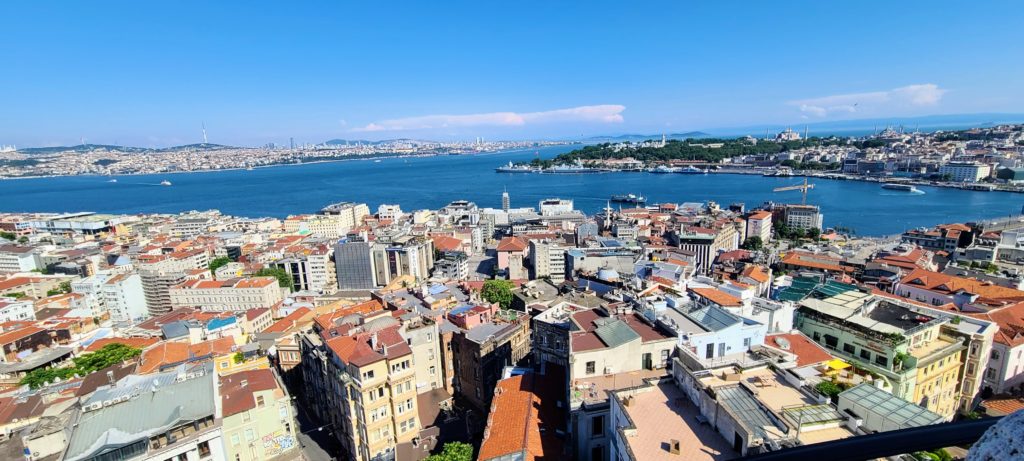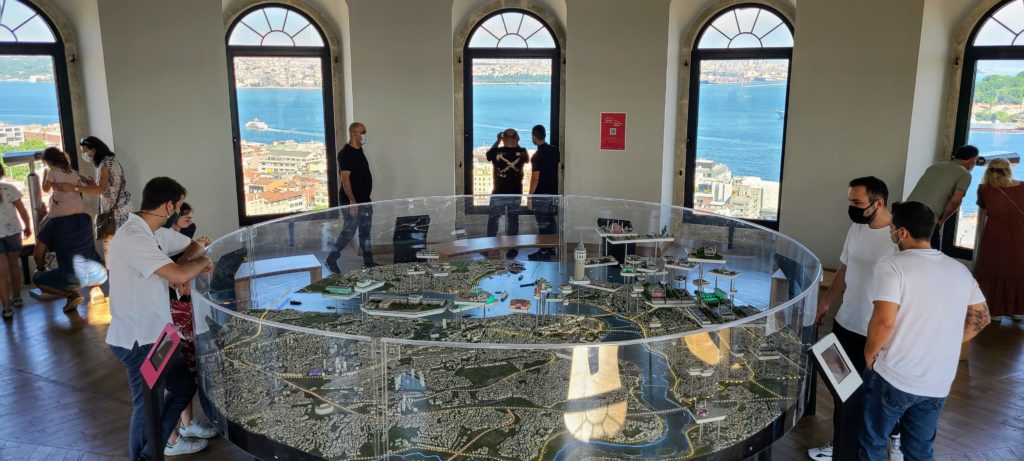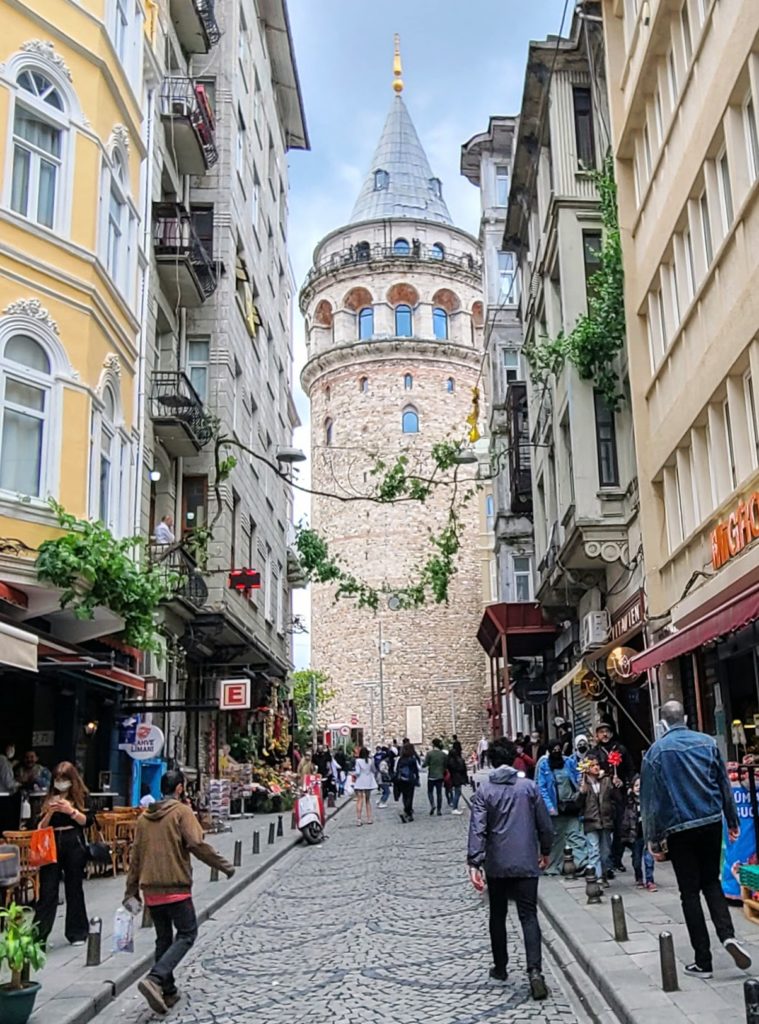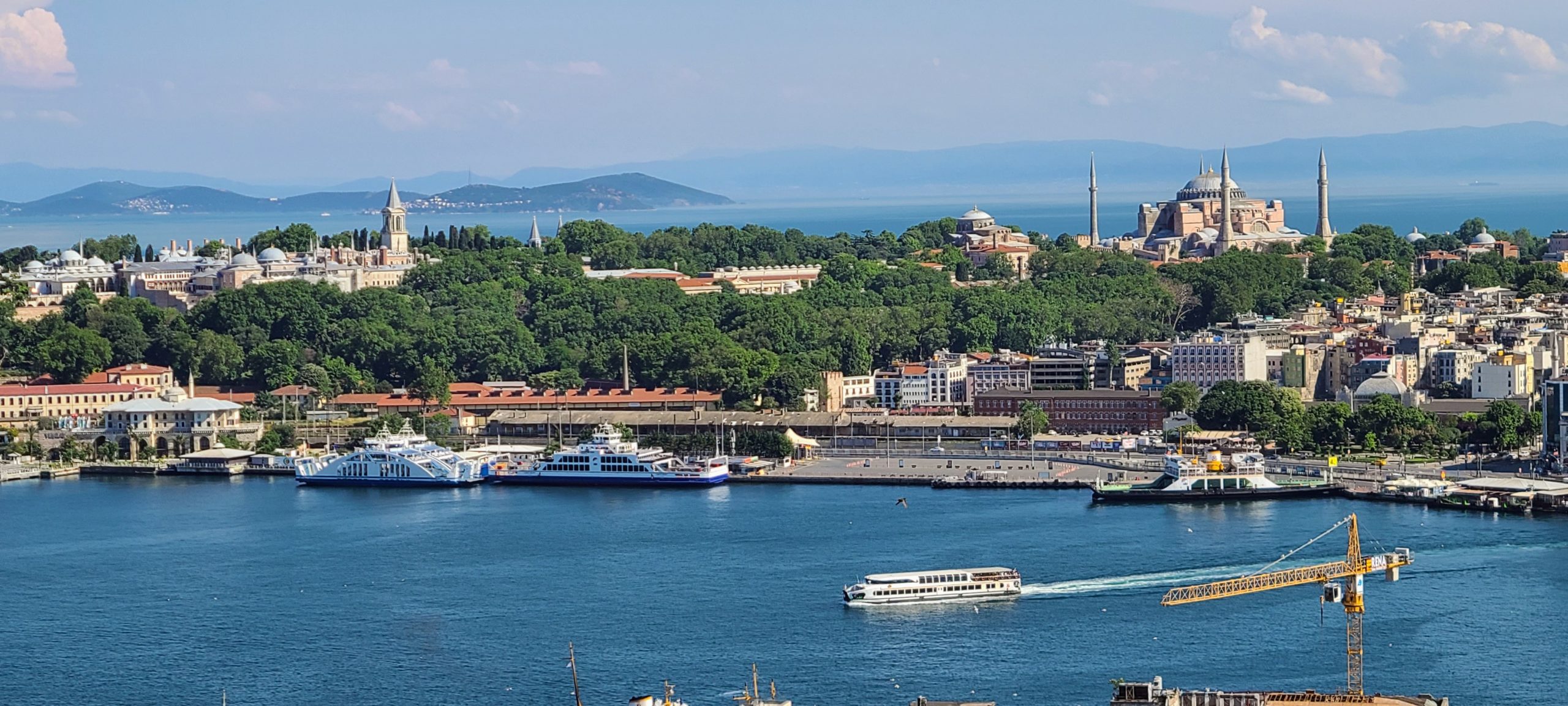The weather is dreary this Monday in Istanbul. Gray skies since early morning persist, and post-lunch raindrops have begun speckling the windows of my apartment by the park on the Golden Horn. The air is damp and cool for such a late-spring day.
This is in contrast to Sunday’s brilliance, just yesterday when the sun reigned in the glory of a regal blue sky, shedding warmth across the city.
Yesterday was perfect for a walk from my apartment in humble, colorful Balat in Fatih, across the Golden Horn waterway on the Galata Bridge, to historic Galata Tower in the bustling tourist area of Beyoglu. It’s an easy, interesting walk of about two miles.

The tower was first built in the early 6th century A.D. by the Byzantine Emperor Justinianos. It was rebuilt by the Genoese in the 14th century, and the latter is pretty much the one that still stands on the strategic hill commanding a view of where the waters of the Golden Horn flow into the Bosphorus Strait.
The Bosphorus Strait separates the continents of Asia and Europe. The city of Istanbul itself also lies on both sides of this unique waterway.
The cylindrical tower with a conical top rises 220 feet and originally served as a lighthouse and surveillance tower for the defense of the city.
Today the exterior conveys the look of its medieval roots, while the interior was given a makeover recently to accommodate more than 2,000 visitors a day.

Visitors take one of two elevators and two sets of stairs to reach the viewing deck that allows a magnificent 360-degree view of Istanbul from a narrow walkway around the exterior of the tower. There are also large windows for viewing from inside the interior.
The way down was by walking through narrow, low-ceilinged but well-lighted passages that open at several floors for museum exhibits, including a model of the city, and gift shop. There’s also reportedly a night club and restaurant that are currently closed due to the pandemic. I didn’t see them.
The ticket for a trip to the top was 30 TL (Turkish lira), about $3.50 USD. It’s certainly worth the price. Just make sure you have a HES code, a personal code number issued by the Ministry of Health, supposedly at the airport, to insure that Covid-infected people aren’t using domestic forms of transportation.
I mentioned in an earlier post how I’d gone through airport immigration, amazingly, with hardly a glance at my passport and no questions, and unknown to me, no HES code. I had some trouble initially boarding the ferry and buses in Istanbul, but I straightened it out and obtained my code, which is printed on my Istanbulkart (card) used for all means of local transportation.

But the ticket seller at Galata Tower wanted to see some separate documentation which I didn’t have. I showed him my Istanbulkart to no avail. I stood there insisting I had one, but he didn’t want to hear it. I didn’t leave the counter so he asked for my passport. I had a copy of my passport with my HES code that I’d handprinted below the image of my passport. He wouldn’t look at that either.
He entered my passport into the system and registered a new HES code for me. He wasn’t very happy with me by that point, since I was asking whether having two HES codes in the system for me now might be a problem.
“No problem,” he repeated several times.
OK, at least then he sold me the tower ticket, and I thoroughly enjoyed the Galata Tower view on a gorgeous day in Istanbul.

Wow persistence wins the day! Great summary..love the imagery. So I wonder about pronouncing the city and building names…I’m relying on my phonics..is that how it works with so many vowels? Stay safe and love love love these updates!
World Traveler, thanks for sharing.
The blues and yellows of the city look cheery. The ongoing significance of the Bosphorus as a crossroads for cultures, races, religions and products is interesting to contemplate.
Just today I managed to see your blog. Amazing picture of Galata Tower. Safe travels.
Hi Bruna, thanks for the nice comment. I wish you well and hope we meet again somewhere some time down the road.